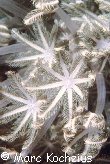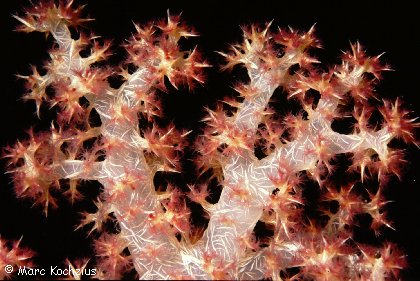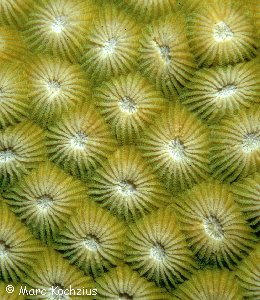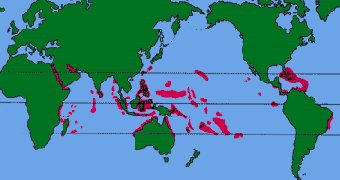|

Soft Corals |
Coral Gardens and
Undersea Wildflowers
|

Coral Polyp |
|
"One moment I hesitate, but then I take
a deep breath and dive under in a unknown magic world. Suddenly I’m in
a world far away from all known landscapes of this planet and only a few
were allowed to see. I’m diving in an forest of corals.”
Hans Hass, Under Corals and Sharks
(1941) |
|
|
Plant or Animal?
Scientists from a long ago believed that
corals were plants. The Swedish Naturalist Carl von Linné (1707-1778)
regarded stony corals as stony plants and put them in close relationship
with moss and algae. Only in 1752 did the French Biologist Jean André
Peysonnel discover that corals are animals. Stony and soft corals, as well
as anemones, are all undersea animal wildflowers. They make up more than
90 percent of a coral reefs overgrowth. |

Dendronephyta, a soft coral |
|
|

Coral skeleton |
Corals as Architects
World wide 1,300 species of stony corals
are known. The single animal is called a “polyp”. The body of a polyp consists
of a bag with a opening at the top, the oral disc. This oral disc is surrounded
by a crown of tentacles. Like all cnidarians, their tentacles are covered
with venomous stinging cells, which are used to capture food items like
plankton or in repelling predators. The polyps live in large colonies and
are able to secrete calcium carbonate (lime stone), which is how they build
up their skeleton. This skeleton gives a shelter for the tiny polyps and
is the back bone for the coral reef itself. Coral reefs grow only one to
four meters in 1,000 years. They are the habitat for a varied and colourful
community of algae and animals. |
|
|
Distribution of Coral Reefs
Coral reefs cover approximately 255,000
square kilometre of sea floor; an area around half the size of France. They
only flourish in regions where the wintry water temperature does not drop
below 20 degree Celsius. That's why we find coral reefs mainly in the tropics.
Stony corals only can grow in shallow, illuminated waters down to a depth
of about 50 meters. The reason; corals live in symbiosis with microscopic,
unicellular algae, which undergo photosynthesis. These algae need the energy
from the sun light to produce carbon hydrates (= sugar) out of carbon dioxide
and water. |

Distribution of Coral Reefs (red) |
|

back |
|

next |
© Marc Kochzius |
|